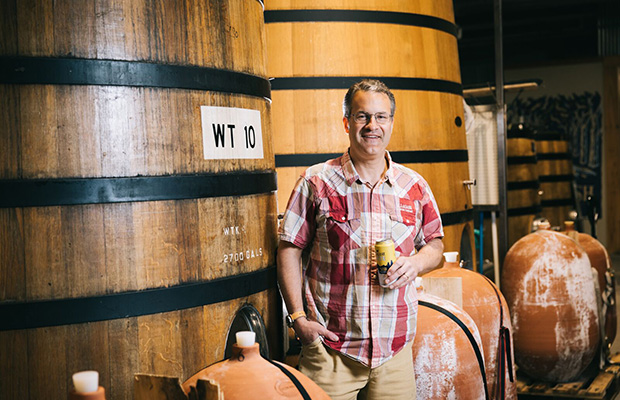
Traveling state to state, selling beer wherever he could and then getting back home in time to brew another batch and clean it all up before hitting the road again. That was a week … strike that … month after month in the life of Rob Tod when he started Allagash Brewing.
No days off. Constant hustle and very little in terms of growth. That’s what the Portland, Maine brewer saw for years and years. Armed with one year of experience in brewing professionally before cobbling together a system to make one beer: White, Tod saw trials and tribulations in the mid-1990s before seeing his brewery grow to become the 30th largest craft brewery in the United States in 2018 with more than 96,000 barrels produced.
“In a lot of ways, it’s been pretty amazing what’s happened in this industry — because here’s an industry which like pretty much every other industry in our lives — between World War II-ish and the 80s/90s it got commoditized and pulled out of communities,” he said, noting that not just beer, but textiles, light and heavy manufacturing and even something like shoe makers were stripped out of communities, and in some cases pulled overseas.
“But beer’s been one of these few things that has been returned to communities,” he said. “It’s just amazing what independent brewers have done in this country to re-deliver value on so many fronts to these communities.”
Yet it’s gotten more competitive, he added.
“I think you just need to do things that continue making your brand and your brewery relevant,” said Tod, who was named the 2019 Outstanding Wine, Spirits, or Beer Producer at the James Beard Foundation Restaurant and Chef Awards in May, 2019.
“We grew just a little bit last year (2018) and we’re actually growing a little more this year,” Tod said. “We’re super excited about our can release.”
The brewery has added a second canning line to help bump up production of the brewery’s longtime staple, White (a Belgian Wheat), along with River Trip (a Belgian Pale Ale).
“They’re doing great. I love being all the drink the White from the can,” Tod said, pointing to the 16-ounce can he drank from throughout the interview. “For 24 years I could only drink it draft and bottles.
“I think that will continue to drive growth. Our brand is very underdeveloped in the off-premise. We’re very thoroughly developed on tap and in the restaurant format but off-premise we’re pretty underdeveloped and we look at that as huge opportunities, and we feel like cans are going to deliver some of those opportunities for us.”
Allagash spent a year on quality checks to make sure the canning of White was the same as the bottling in terms of shelf stability and consistency in packaging.
“We spent a ton of time and energy,” Tod said. “We’ve had that machine canning beer there for months before we actually started rolling it out. We got White to the point where on a blind tasting panel (about 50 full-time employees) statistically they could not tell the difference between cans and bottles. So there’s no quality difference from our perspective.
“It’s a little bit of a different experience drinking it directly out of a can versus drink drinking it directly out of a bottle. But if you pour the two in a glass and ask someone to tell the difference … they’re not going to be able to do it.”
With the first canning line getting to the point where the quality is great, Tod and his team saw there was absolutely no way it would be able to service all 17 states.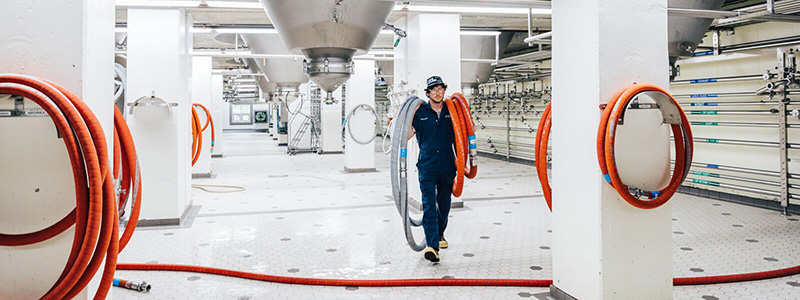
“We’re distributing to the northeast now from Maine to New York,” he said of that machine. “We’re absolutely at full capacity on that little canning line doing White and River Trip four-packs and some occasional specialty releases, but we’ve got a ton of demand from markets down south — from Chicago and California — for the cans.
“So that’s the main reason we’re putting this faster line in, is to be able to service those markets and then hopefully come up with some different package sizes beyond just 16-ounce four-packs. I don’t know exactly what those will be at this point, we’re looking at a number of options but we’re hopefully going to be able to roll out some new package sizes and some more brand variety.”
Allagash has also been working closely with Maine farmers and maltsters like the Buck family — owners of Maine Malt House — in Mapleton, Maine. Maine Malt House provides two-row malted barley and they even planted a specific wheat variety for Allagash.
“Due in large part to our initiative to buy one million pounds of Maine-grown and processed grain, per year, by 2021, we’ve built a close relationship with them,” he said. “So instead of just calling them up and saying ‘we need X amount of grain,’ we work with local farms on everything from grain QC to planning our grain needs years ahead — so they have time to build their infrastructure and grow with us.“
Innovation is furthered by not just exploring canning and working locally with suppliers; Tod also continues to let all his employees explore the depths of beer flavors to keep the Allagash machine moving forward. An example of what Allagash does to stay relevant is that anyone in 150-person company can talk to Brewmaster Jason Perkins and brew an idea on a 10-gallon system. Some of those beers have become full-scale production beers, Tod said.
“Rather than just our innovation department being me the owner or Jason the brewmaster, we have 150 people here at the brewery innovating,” Tod said. “And it’s a way for us to have a lot more fun doing it.”
Tod was a do-it-all man at the start.
“Basically, I signed the lease in fall of ‘94 and started building the brewery,” he said. Tod retrofitted dairy equipment for the main mash tun (it was used for the first 18 years of the brewery’s existence). He took what he learned from his one year of working at Otter Creek Brewing in Vermont and applied it to his creation, which he wanted to keep simple.
“I just didn’t have a whole lot of experience so I figured it was a small operation, draft-only …no employees, just one style of beer,” Tod said. “That would be a way to launch things and keep them simple and I would kind of learn as I went. I also had a pretty limited budget so I did a lot of the work myself.
“I didn’t have a consultant, and I didn’t have to shop around for brewing systems. I just put it together from what I knew with my one year of experience. It was just very, very simple. Very, very Spartan. Very manual.”
Tod was alone from the fall of 1994 through 1995.
“I sold the first batch of Allagash White in the summer of ‘95,” he said. “I did all the brewing, keg washing … anything that had to be done.”
In 1996, Tod hired Ned Wight (who now runs New England Distilling) as his first employee.
“I could brew a batch of beer Monday, wash kegs Tuesday, fill kegs Wednesday and then spend like Thursday through Saturday selling beer and then come in and do a bunch of mechanical work on the brewery Sunday. It was seven days a week back then,” recalled Tod, but as the years progressed he has settled into his role as owner and stepped away from trying to tackle all aspects of the industry.
“It’s not hard to hand stuff off when you have very, very competent people, which we do,” he said. “I’m more confident in everyone else’s ability to do the things that I used to do than I have in my ability to do it. I’ve got so much confidence in the crew here. Once you hand things off and realize they get done a lot better by people who are more competent than you are, then it gets really easy to hand those things off. That was never something that I struggled with.”
But early on, it was a grind.
“When I opened my doors in the summer of 1995, that’s right when that kind of period of headwinds started for craft beer,” he said. “If you look at the growth curve in the industry, it grew like crazy right up to that point and then things really just flatten out. And growth was slow.”
When Tod entered the market, there wasn’t a whole lot of excitement swirling around the industry like there is now. The first 10 years were rough, he admitted, and it altered his thoughts on how to grow his business.
After contracting the reach of Allagash from about 30 states to now just 17 about a decade ago, Tod sees local markets as the keystone to growth for the veteran brewery.
“One of the biggest lessons I learned is don’t be a mile wide and an inch deep,” he said.
“That’s one — in hindsight — probably a mistake we made is that we just got spread too thin over the first 10 or so years. I should have looked at maybe other ways of delivering the volume we needed to survive.
“We ended up in like 30 states with no full-time reps at the company. We probably weren’t a great partner to our wholesalers back then. We weren’t doing planning meetings. I could only get to so many markets so many times a year. I was on the road constantly.”
Keys to the change mean the beer is fresher everywhere. Allagash now has great relationships with distributors as well.
“Beer is rotated. We have a really robust system of planning … well in advance of each year with our distributor partners, and we have a we have great reps in every single market,” Tod said. “We feel like we’re doing A-plus job everywhere now whereas honestly 15 years ago we were getting by doing a D-plus or C-minus job everywhere.”
In addition to being everywhere to start (small volume in many places), Tod chose a beer style that was something people had almost zero exposure to.
“I used to walk into bars and pour samples and the first thing people would do is look at it and they’d be like, ‘What’s wrong with it? Why does it look like that? Why is it cloudy?’ and they smell the beer and taste the beer and they go ‘Why does it taste like this?’ Just people hadn’t had these beers, but that was kind of what I was after,” Tod said. “I didn’t really see the point of spending a year building the brewery and maybe my lifetime running it only to make beers that people can already get their hands on. I wanted to do something completely different.
“I looked at the Belgian brewing tradition as an opportunity to do that. I chose the White because I looked at it as a beer which would indeed be a very unique experience but was really a sessionable beer that I felt it’s a great beer to pair with food. The paradox was I obviously wanted to survive but it was important to me to give people this really unique experience.”
Unfortunately for Tod at the time, the experience was so unique that the beer didn’t sell, so it was hard to survive.
“It was 10 years of just like grinding it out but I believed in it,” he said. “Our growth for the first 10 years was very slow.”
The brewery grew from Tod and Wight to about five employees after 10 years.
“These days, that seems like painfully slow growth,” Tod said.
Photos by Mat Trogner



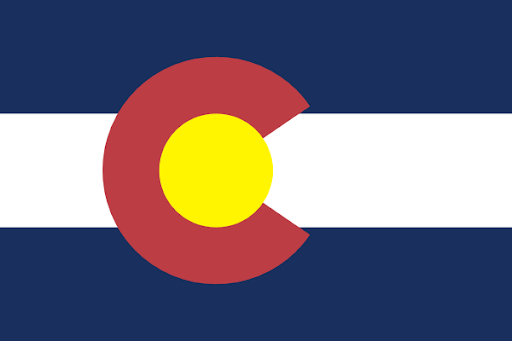
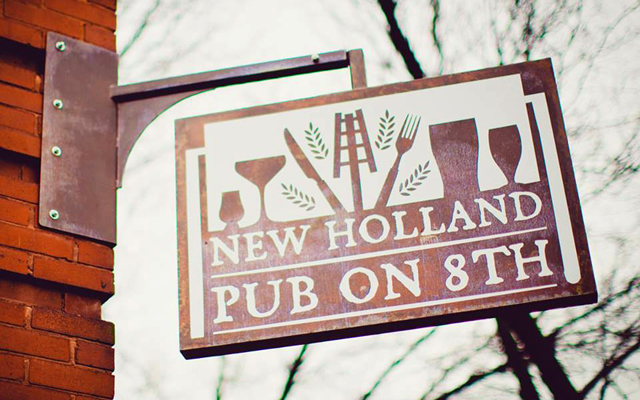
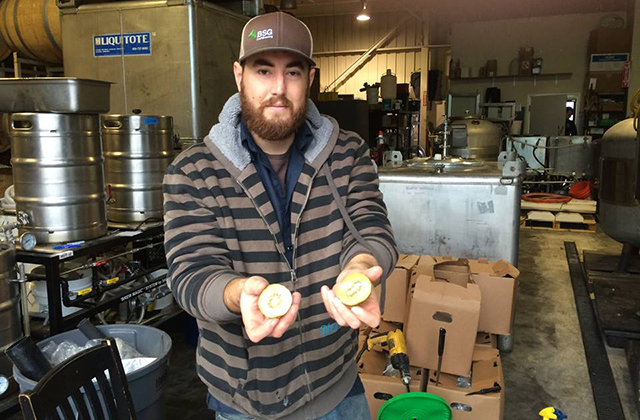
1 Trackback / Pingback